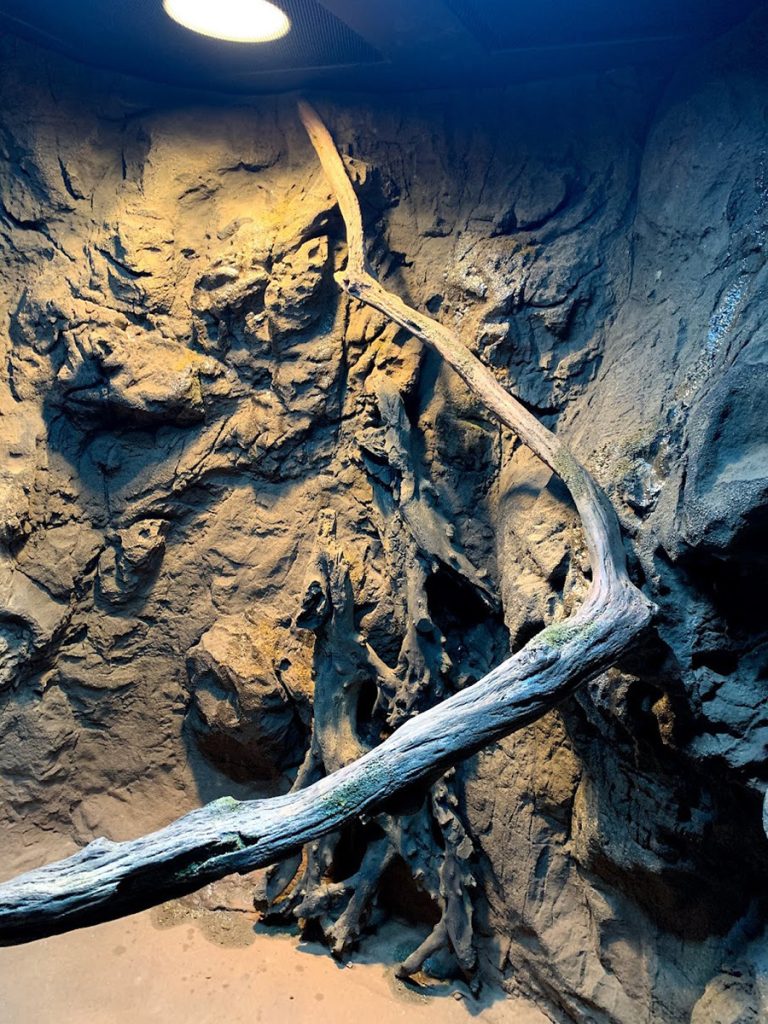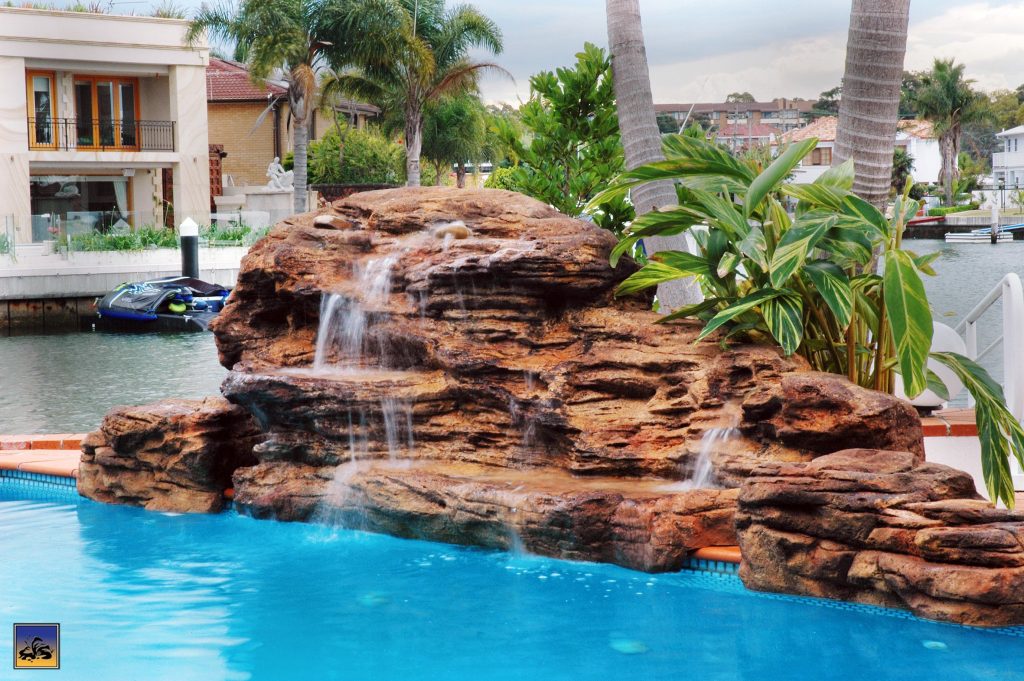Animal Habitat Design: Custom Indoor Enclosures for Aquariums, Reptiles, and Pets
Why Animal Habitat Design Matters Indoors
Creating safe, natural, and engaging environments for animals is both an art and a science. Whether it is a fish aquarium in your living room, a reptile terrarium in a classroom, or a zoo exhibit for exotic animals, the goal is always the same: create an environment that feels natural, keeps animals safe, and is practical to maintain.
Traditional materials like real rock and wood have long been used to replicate nature, but they present challenges indoors. Real stone is heavy, unsafe in glass tanks, and difficult to clean. Wood rots or harbors bacteria. That is why more people are turning to lightweight artificial rock walls and panels to build aquariums, reptile habitats, and custom enclosures that balance beauty, safety, and practicality.
This guide explores animal habitat design for aquariums, reptiles, pets, and commercial exhibits. You will see how lightweight rock walls and enclosures improve safety, simplify maintenance, and create immersive environments for both animals and people.

The Challenges of Using Real Rock Indoors
Real rock might look authentic, but indoors it comes with drawbacks:
- Weight: Large rocks can weigh hundreds of pounds, making them unsafe in aquariums or terrariums.
- Structural concerns: Heavy installations put stress on walls, floors, and glass tanks.
- Cleaning difficulties: Porous rock traps algae, bacteria, and moisture.
- Injury risks: Animals can cut themselves on sharp edges or be crushed by shifting stones.
- Cost and labor: Quarrying, transporting, and installing stone is expensive and time-consuming.
These drawbacks limit the practicality of natural stone, especially for people designing indoor animal enclosures at home or on a commercial scale.
The Solution: Lightweight Rock Panels for Animal Enclosures
Artificial rock products provide the same visual appeal as natural stone but are designed to be lightweight, safe, and durable. One of the most widely used options in animal habitat design is Universal Rocks, a product line of lightweight artificial rock walls and panels. They are designed to replicate the look of natural stone while staying durable, non-toxic, and easy to clean, which makes them a popular choice for aquariums, reptile enclosures, and zoo exhibits. They are also used to create swimming pool waterfalls.
Key benefits for habitat design:
- Lightweight and safe for any size enclosure.
- Durable enough to withstand scratching, climbing, and repeated cleaning.
- Non-toxic and safe for aquariums, reptiles, and mammals.
- Customizable so panels can be cut or shaped to fit any enclosure.
- Easy to clean because sealed surfaces resist mold, algae, and bacteria.
- Realistic appearance that mimics natural stone in color, texture, and shape.
This makes lightweight artificial rock the best choice for indoor animal habitat design, from small aquariums to full commercial exhibits.
Applications by Animal Type
Fish and Aquariums: Rock Walls and Backgrounds
Aquariums are one of the most popular indoor habitats, and habitat design plays a big role in both aesthetics and animal health.
How artificial rock benefits aquarium habitat design:
- Rock backgrounds create depth and realism without stressing glass tanks.
- Fish safety improves because there are no sharp edges to injure fins or delicate scales.
- Lightweight panels prevent cracking or damage to aquarium walls.
- Maintenance is easier since panels resist algae buildup and wipe clean.
Commercial Use: Public aquariums rely on artificial rock walls to replicate rivers, caves, or coral reef environments. They enhance visitor experiences while keeping systems manageable for staff.
Reptiles and Amphibians: Custom Enclosure Design
Reptile and amphibian enclosures need climbable surfaces, basking areas, and secure hiding spaces to support natural behaviors. Products such as Universal Rocks panels offer climbable textures and caves that reptiles love, while remaining safe and easy to sanitize.
Benefits for reptile enclosure design:
- Climbable rock walls are ideal for geckos, iguanas, and climbing lizards.
- Caves and ledges provide secure hides for snakes, frogs, and geckos.
- Panels resist moisture and mold, making them perfect for high-humidity terrariums.
- Safety is improved because lightweight panels will not collapse or crush delicate animals.
Commercial Use: Zoos and educational facilities often use custom reptile enclosures with artificial rock panels to create realistic exhibits while simplifying cleaning and upkeep.

Birds, Small Mammals, and Zoo Animals
Large-scale zoo enclosure design relies on durability, scalability, and realism. Heavy stone is impractical for most indoor exhibits, but artificial rock makes it possible to replicate natural habitats.
Why it works for zoos and exhibits:
- Scalable rock walls cover large areas without structural strain.
- Panels are durable enough to handle interaction from birds, primates, and small mammals.
- Custom ecosystems such as deserts, jungles, or caves can be recreated indoors.
- Visitors engage more deeply with naturalistic exhibits, which improves education and satisfaction.
Commercial Element: Zoos and wildlife centers can improve guest experiences, encourage longer visits, and increase memberships by investing in realistic exhibit design.
Dogs and Cats: Indoor Pet Enrichment
While fish and reptiles dominate discussions about habitat design, household pets also benefit from indoor enrichment.
Applications for dogs and cats:
- Indoor cat climbing walls turn plain spaces into vertical play areas.
- Dog training and agility areas can be built with lightweight rock structures that are safe for exercise indoors.
- Pet clinics and stores can use natural features to create welcoming environments that reduce animal stress.
Commercial Element: Veterinary clinics, pet stores, and boarding facilities can stand out by offering environments that feel natural and engaging for pets and their owners.
Secondary Uses: Indoor Habitat Design Beyond Animals
Artificial rock panels do not just serve animal enclosures. They also work as decorative features in human spaces:
- Accent walls in homes, offices, and basements.
- Indoor waterfalls for calming lobbies or waiting rooms.
- Commercial interiors in restaurants, gyms, or retail spaces.
These additional uses make artificial rock panels versatile investments that benefit both animals and people.

Benefits Recap
- Lightweight and safe for aquariums, terrariums, and exhibits.
- Non-toxic and animal-friendly.
- Customizable for small enclosures or large commercial spaces.
- Durable for climbing, scratching, or cleaning.
- Realistic natural appearance.
- Strong commercial potential for zoos, aquariums, and clinics.
Commercial Opportunities in Animal Habitat Design
Animal habitat design is not just for pet owners. It has huge potential in professional spaces:
- Zoos and aquariums can create immersive environments that attract visitors.
- Pet stores can use naturalistic displays to encourage animal sales and habitat upgrades.
- Veterinary clinics can improve patient comfort and brand image with calming spaces.
- Hotels and restaurants can use aquariums and pet-friendly displays as unique décor.
Commercial facilities gain both aesthetic and functional value by integrating lightweight rock panels into animal-focused spaces.
Frequently Asked Questions
Animal habitat design is the process of creating safe, natural environments for animals indoors or outdoors. It focuses on health, behavior, and ease of care.
Artificial rock panels are lighter, safer, easier to clean, and customizable, making them more practical indoors.
Yes. They are non-toxic, do not alter water chemistry, and are safe for fish and other aquatic life.
Yes. Panels are textured for grip and can include caves or ledges for hiding and basking.
Yes. Zoos use them for large-scale exhibits because they are durable, scalable, and realistic.
Yes. Cat climbing walls and dog play areas provide enrichment, exercise, and stress relief.
Yes. They can be cut or shaped to fit aquariums, terrariums, or large enclosures.
With proper care, artificial rock panels can last many years, even in high-use commercial settings.
Like any surface, they can, but sealed panels are easier to clean than porous natural stone.

Conclusion
Animal habitat design has evolved far beyond plain glass tanks and basic cages. With lightweight artificial rock panels, it is now possible to build indoor habitats that look natural, keep animals safe, and are easy to maintain.
From fish aquariums to reptile terrariums, from zoo exhibits to pet clinics, these enclosures enrich the lives of animals while also creating engaging spaces for people.
Whether you are a pet owner at home or a professional designing exhibits, animal habitat design with artificial rock walls is the best way to bring the outdoors in without the heavy lifting.

